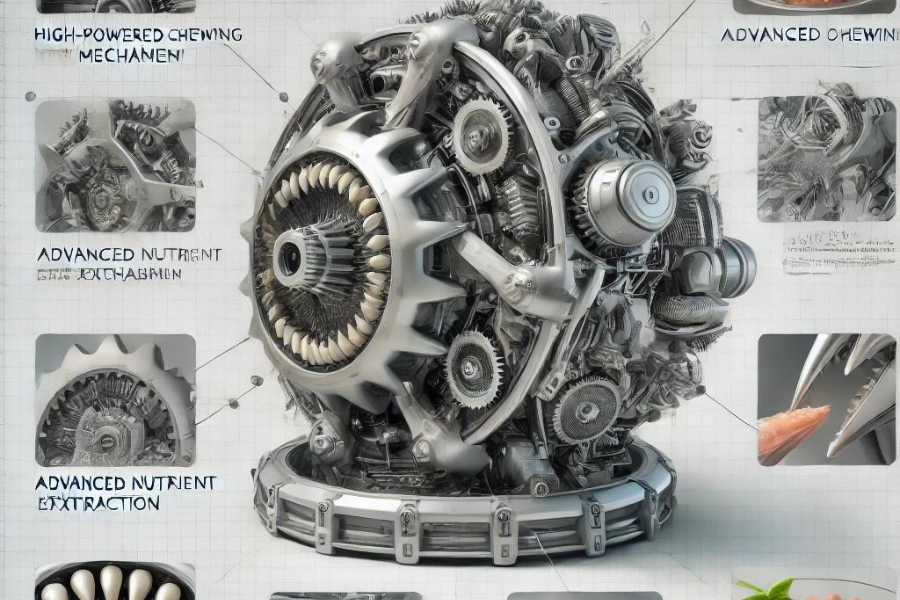In the fast-growing industrial scenery of today, masticelators have become indispensable devices in different applications; they are employed increasingly more frequently to enhance efficiency and efficacy over several processes. Knowing why masticelators are important and their advantages may be useful not only in manufacturing but also within various specializations like pharmaceuticals. In this post, we are going to discuss masticelators from their features and anything you can do with them!
- Key points: Masticelators have become essential for upgrading and enhancing the performance of products in various industries. They act to improve wear resistance, stability, and the lifespan of materials. Better knowledge of their applications can result in higher product quality and process efficiency.
1. What is a Masticelator?

One of these substances is a masticelator, which significantly softens the matter, making it take much less time and forceful pressure—pressing. The word comes from the Greek “mastiche,” which means “to gnash (the teeth),” emphasizing its bite and texture modification functions.
Functions of Masticelators Masticelators perform several important jobs:
- Control Viscosity: The viscosity of liquids and semi-liquids can be adjusted, allowing optimal performance in many applications.
- Stabilization: Emulsions and suspensions will not separate; everything from water to solid particles is combined in a stable, homogeneous matrix.
- Thickening Agents: They are designed to make liquid or solid formulations thicker, essential in areas like paints, coatings, and pharmaceuticals, where they help the specific substance maintain its ideal form and keep all ingredients together.
Common Types of Masticelators
- Natural Masticelators: Originated from natural sources such as plant gums and resins.
- Synthetic Masticelators: Chemical compounds manufactured to give certain properties and benefits.
2. Applications of Masticelators in Various Industries
Because of the unique circumstances created by their range of properties, masticelators are routinely used throughout a variety of industries. Here’s a deeper look at some of their major use cases:
2.1. Manufacturing Industry In production, masticelators enhance the quality and uniformity of items. They are crucial in:
- Paints and Coatings: Increasing the applicator value of spreads in paints and other coatings.
- Adhesives: Improving bonding power and adapting the flexibility of adhesives.
2.2. Pharmaceutical Industry Masticelators play a pivotal role in the pharmaceutical industry:
- Formulations: Stabilizing the consistency and stability of drug formulations.
- Sustained Release: Modifying the way that tablets and capsules release their active ingredients.
2.3. Food and Beverage Industry Masticelators are used in the food industry for:
- Texture Enhancement: Improving the texture of different food ingredients like sauces and dressings.
- Stability: Tackling ingredient separation in beverages and dairy products.
2.4. Cosmetics and Personal Care Specifically, in cosmetics, masticelators are used to:
- Consistency: Achieve the desired texture and viscosity in creams, lotions, etc.
- Stability: Maintain the stability and appearance of all skincare products, including color formulations.
3. Benefits of Using Masticelators
Masticelators can add a lot of positive side effects in several applications. Here are some key advantages:
3.1. Improved Product Quality
Masticelators improve product quality by:
- Improving Texture: Making things feel smooth and consistent.
- Avoiding Segregation: Keeping solid particles in a homogenous emulsion.
3.2. Increased Efficiency
Masticelators are used in manufacturing and processing to:
- Optimized Performance: Enhance products and the processes of creating them.
- Waste Removal, Better Yield: Reduce waste and improve output.
3.3. Enhanced Stability
They help in maintaining the stability of products by:
- Fight Degradation: Resistance to chemical and physical changes.
- Expanded Life: Extending the lifespan of products.
4. Key Properties to Consider in Masticelators
When choosing a masticelator for any application, it is important to consider the following attributes:
4.1. Viscosity Range
The ability of the masticelator to alter viscosity is critical for obtaining the desired consistency.
4.2. Stability
The performance of every masticelator depends on its stability under different conditions (temperature, pH, etc.).
4.3. Compatibility
You should verify the compatibility of the masticelator with all other ingredients and materials used in your formulation.
5. Choosing the Right Masticelator for Your Application
The following factors need to be considered to choose the most suitable masticelator:
5.1. Application Requirements
What exactly do you need a masticelator for? Is it to control viscosity or for complete texture stabilization?
5.2. Material Compatibility
Ensure compatibility with other components in the formulation to avoid adverse reactions.
5.3. Regulatory Considerations
Check for any regulatory requirements or restrictions related to the use of masticelators in your industry.
6. Innovations and Future Trends in Masticelator Technology
In line with this trend, new developments in masticelator technology are working towards better performance and sustainability. Key trends include:
6.1. Sustainable Alternatives
Eco-friendly and biodegradable masticelators are being developed to reduce environmental impact.
6.2. Advanced Formulations
Advancements in formulation techniques are enhancing the performance and efficiency of masticelators.
6.3. Customization
Custom masticelators are being tailored to meet specific industry needs and application requirements.
7. FAQs About Masticelators
1. What are the main uses of masticelators in the pharmaceutical industry?
Masticelators are used in the pharmaceutical industry for controlling the viscosity and stability of drug formulations, as well as modifying the release rate of active ingredients.
2. How do natural and synthetic masticelators differ?
Natural masticelators are derived from natural sources like plant gums, while synthetic masticelators are chemically engineered to provide specific properties and benefits.
3. Can masticelators be used in food products?
Yes, masticelators are commonly used in the food industry to improve texture, stability, and consistency in products like sauces and beverages.
4. What factors should be considered when choosing a masticelator?
Consider factors such as viscosity range, stability, compatibility with other ingredients, and regulatory requirements.
5. Are there any emerging trends in masticelator technology?
Emerging trends include the development of sustainable alternatives, advanced formulations, and customization for specific applications.
Conclusion
Masticelators are very important when it comes to improving the performance and quality of products in different industries. Understanding how each of these tools functions, their benefits, and applications will help businesses make more intelligent decisions to improve their processes and products. Continued developments in masticelator technology will drive innovation and sustainability into the future.
Do you have any questions about masticelators or their applications? Feel free to leave a comment below! For more insightful articles on related topics, visit Jessica Ditzel.




